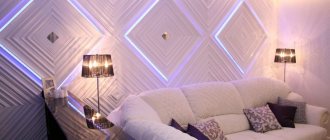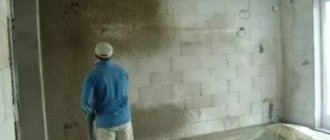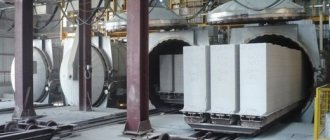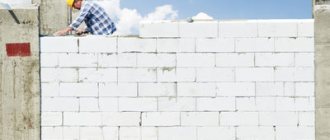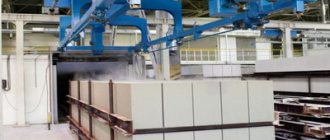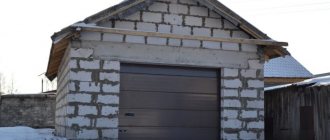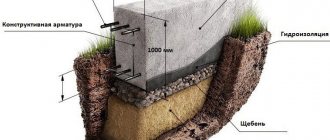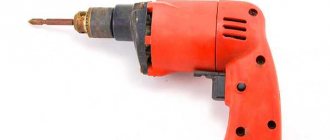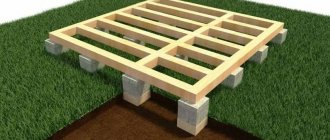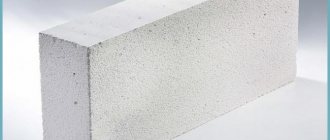Advantages of gas silicate as a building material
Gas silicate blocks are a natural building material, a type of cellular concrete, and consist of a concrete mixture and silica sand. Manufacturers, to obtain larger volumes, heat the mixture to high temperatures. During the heating process, pores appear in the structure of the blocks. It is they who determine the main advantages of this material.
Gas silicate has low thermal conductivity. It does not let heat and cold into the house, so it is always cool in the summer and warm in the winter. Increased tightness of premises is achieved through the use of special adhesives.
The sound insulation of the material is also good. On average, the performance is 8 times better than that of brick. During construction, additional sound insulation may not be used.
Since gas silicate blocks are very light, they can be laid and moved independently without any problems. The light weight of the material also reduces foundation costs. Therefore, building cottages from gas silicate blocks is an economical and simple solution.
There is no need to use a drill to create small holes when working with gas silicate blocks: a nail or self-tapping screw can be easily driven into them. The drill is used only to create holes for sockets or communications. Thus, you can easily decorate the walls (hang pictures and other elements) and screw in furniture.
Gas silicate blocks absorb vapors and release them to the street, so the building will never feel stuffy or high humidity. Thanks to this feature, moisture is quickly removed from the premises, which reduces the risk of mold. For even greater reliability, you can waterproof it before erecting the first row of blocks. We recommend ordering gas silicate from the manufacturer here: https://belkirpich.ru.
Advantages of gas silicate
Building a house with your own hands using gas silicate as the main material has the following advantages:
- efficiency;
- environmental friendliness;
- fire resistance;
- soundproofing;
- thermal insulation;
- frost resistance;
- ease;
- ease of use.
The main advantage of gas silicate is the relatively low price for the material, which makes building a house from gas silicate blocks cheaper than from brick. These blocks have good thermal insulation and help to better insulate a home than other building materials. The porous structure gives them high sound insulation properties.
Gas silicate has excellent vapor permeability and does not accumulate steam and moisture indoors, but removes it outside. In the event of a fire, the material does not burn and only slowly melts, since it consists of non-combustible elements. Since the weight of a gas silicate block is much lighter than standard concrete, such a building will not need a solid foundation and will save on the foundation. Only natural materials are used in the manufacture of blocks: aluminum powder, lime, quartz sand, cement and water. When building a house from cinder blocks, you also don’t have to worry about harmful fumes.
Foreman's advice : when building a house with gas silicate blocks, the walls will settle within one year, therefore, in order to avoid the formation of cracks, it is not advisable to use plaster for interior decoration.
Main features of building a house from gas silicate blocks
As already mentioned, houses made of gas silicate material are lighter than brick or concrete. This determines the main advantage of this building material - the absence of a serious foundation. To erect a building, it is enough to create a shallow strip foundation.
But there are also disadvantages. Since gas silicate material is very sensitive to moisture, when building the foundation and lower tiers of blocks, it is necessary to do waterproofing. Basically, roofing material is used for it, which is laid in two layers.
Of course, you don't have to do this. However, if you do not install a layer of waterproofing, the finished premises may subsequently become too humid. This will lead to the formation of mold and deterioration in the health of those living in the house.
Foundation for a house
Scheme of foundations for a house made of gas silicate blocks: 1 – for external walls; 2 – under internal walls; 3 – under the oven. And also the floor diagram: A – silicate facing brick; B – air gap; B – waterproofing made of two layers of waterproofing. glued together; G – gas silicate blocks with dimensions of 300 X 200 X 600 mm; D – monolithic strip concrete or rubble concrete foundation; E – blind area; F – additional backfill around the perimeter of the building; 3- wooden spacer 200X200X25 mm; I - plank covering made of boards 35-40 mm thick; K – logs with a section of 150X 100, pitch 400-500 mm; L – concrete or brick column on cement-sand mortar; M – compacted clay 100 mm thick; N – two layers of roofing felt; O – sand backfill; P – furnace masonry.
Some inexperienced builders incorrectly assume that in order to build a house from gas silicate lightweight blocks, it is enough to make the same lightweight foundation. In fact, due to the low flexural strength, even a slight shift is enough to cause cracks to appear across the entire surface of the walls. That is why the foundation of a house made of such blocks, built with your own hands, must be strong and solid. The best way for any soil is to use a reinforced concrete monolithic slab. A columnar foundation reinforced with a monolithic belt of concrete or a strip-type structure on a sand cushion are also considered successful solutions.
So, the foundation is the basis for any house. Professionals advise taking into account the property of gas silicate blocks, such as hygroscopicity, and placing their first row at some distance from the ground. As a rule, two methods are used. In the first method, in order for the foundation to be above ground level, when performing it, you need to make formwork. If the foundation is made according to the ground level, the laying of walls should begin with the use of ordinary sand-lime brick. As practice shows, to make the first row of gas silicate, it is enough to place the blocks at a distance of at least 50 cm from the ground.
The first step is waterproofing with 2-3 layers of roofing felt. It is recommended to lay the first row blocks using cement-sand mortar. The laying of the walls of the initial row is very important. The smoother it is, the higher quality all the masonry done by yourself will be. Properly performed waterproofing of the foundation will allow you to operate the house in the future without unnecessary problems.
Necessary tools and auxiliary materials
When building a cottage from gas silicate, you must use special tools, such as a hydraulic level or a mallet, to ensure that the rows are even. A complete list of tools and materials important in the construction of a gas silicate house is presented below.
Tools
To connect the blocks, a carriage of suitable width is required. It is used to apply cement or special mixtures. A notched spatula can be used instead.
Be sure to use a hydraulic level, a drill and a mallet, as well as a trowel for laying the binder mixture. You also need a wall chaser to create recesses for reinforcement, and a circular saw, which will allow you to cut the material easily and evenly.
The following tools are also often used during construction, but are not required:
- spatula for building putty;
- sanding mesh (can be replaced with a grinding wheel);
- a plane for cutting irregularities if the gas silicate is not of high quality;
- hacksaw for the same purpose.
We must not forget about auxiliary tools for marking and alignment: markers, tape measures, twine. Beacons are used to mark important crossings.
Additional mixtures
During installation, you will definitely need a connecting compound that will improve the fit of the gas silicate blocks to each other. You can choose one of two options: a standard cement mixture with added sand or special glue.
It is recommended to use a cement mixture in the first stages of construction, when connecting the foundation and gas silicate blocks, as well as when creating the first rows. This material is suitable if the upper surface of the block elements is uneven. By applying the mixture in a large layer, it can compensate for external defects of the material.
A special adhesive is used to connect the blocks in the upper and middle parts of the building. It connects the material well, while having a significant advantage: the building material has low thermal conductivity.
Thanks to this property, cold air will definitely not penetrate into the building in winter. A special adhesive composition allows you to create a connecting seam with a maximum width of 3 mm; with the proper level of dexterity, it is limited to 2 mm.
The cement mortar must be prepared in a special way. When diluting the mixture, you must use one part powder and three or four parts sand. Next, the elements are diluted with water until the consistency of sour cream is obtained. During application, it is necessary to constantly wet the blocks with water to improve their connection.
Gas silicate strongly absorbs water, due to which the quality of the joint may decrease. Non-professionals are better off using special glue.
What is the best material to choose?
First you need to figure out what aerated concrete is and what aerated silicate is, and whether there is a difference. These materials belong to varieties of concrete and differ only in manufacturing technology, but have the same characteristics.
Gas silicate is aerated concrete, which may not contain cement at all, or may be present in small doses. A silicate mixture is used for the binder.
Aerated concrete is made from cement, water, lime and quartz sand . Both compositions undergo the same technological process. To form pores in materials, paste or aluminum powder is used. Non-autoclaved concrete is produced using old technology.
The difference in name (gas silicate or aerated concrete) refers to the material used to create the product. According to the new standard, autoclaved concrete does not require marking of the binder composition, so it is more correct to call this type “aerated concrete.” It is worth noting that in practice the same product can be called differently.
Autoclaved and non-autoclaved aerated concrete
Autoclaved concrete has a number of advantages:
- made using special technology, it is more durable;
- has soundproofing qualities;
- has less weight compared to other concretes.
The main disadvantage of autoclaved concrete is its great fragility.
Although non-autoclaved concrete is of lower quality, it also has some advantages. It absorbs less moisture and is cheaper.
When choosing a material for construction, you need to know a number of parameters . Density: the strength and thermal insulation characteristics of gas silicate depend on it. Blocks with a density of 500 kg/m3 are considered suitable for the construction of low-rise buildings.
Durability: this parameter depends on the quality of production. Good quality means the minimum amount of defects found in the purchased blocks. Ease of processing: it is easier to finish walls using gas silicate than brick.
Dimensions
When choosing the size of gas silicate blocks for building a house, you need to decide on the thickness of the wall (we'll talk about this below): an external wall with a thickness of, for example, 400 mm. can be placed either in one row or in two rows of 200 mm each. Here are the standard block sizes most commonly found on the market:
- Block width for external walls: 200, 250, 300, 350, 375, 400, 500 mm, for internal partitions: 100-150 mm.
- Length: 600, 625 millimeters.
- Height: 200, 250, 300 mm.
When choosing a material for building a house from gas silicate blocks, remember frost resistance . With strong temperature changes, intensive wear of the material occurs.
It would be a good idea to look at the product recipe. Remember, the more cement there is in the blocks, the less moisture it will absorb. When purchasing aerated concrete, you need to let it rest.
Gas silicate blocks have a service life of up to 100 years in a suitable climate and 50 in a humid climate.
Construction: with your own hands or with the help of professionals?
Gas silicate blocks are very light and almost perfectly smooth. They are easy to install yourself. They are attached using ready-made special solutions, using which even a non-professional can achieve a very narrow seam. Therefore, construction can be carried out independently.
To simplify the process, it is recommended to purchase blocks with special recesses on the end side. They allow you to align a number of blocks and improve their joining. Thanks to this feature, the connection line looks professional with a minimum of effort.
Advantages of buildings made of gas silicate
Houses made of aerated concrete are lightweight. This allows you to choose low-cost and quickly erected foundations as the base: shallow strip foundation, shallow slab foundation, pile foundation, screw foundation. Most often, private developers erect MZL (shallow strip foundation). The good thing about it is that you can do all the work during its construction yourself.
Among the advantages of buildings made of gas silicate is good sound insulation of walls and ceilings. It is provided by the presence of air in the stones. The sound conductivity of porous blocks is 10 times lower than that of brick. This is important to ensure peace and quiet in the house.
Types of sand-lime brick.
Another advantage of gas silicate is its environmental friendliness. These building blocks are made only from natural ingredients. The composition of aerated concrete includes:
- quartz sand;
- aluminum powder;
- cement;
- lime;
- water.
All of these ingredients are classified as non-flammable materials. Therefore, the aerated concrete block does not burn, but melts. Manufacturers offer several brands of these products: D350, D400, D450, D500, D550, D600, D700. The digital indicator indicates the density of the building stone. This characteristic determines the bending and compressive strength.
Construction algorithm
The construction of a building begins with the construction of the foundation. The most popular option is fine tape. It is best to install the foundation under the supervision of professionals.
Roofing felt or other waterproofing material is laid on the foundation in two layers. The installation must be of high quality so that high humidity does not occur in the building.
The first rows are usually built using cement mortar. Construction begins at the corners, then ropes are pulled to align the rows.
The first rows are the most difficult, they need to be constantly aligned. Blocks may need to be trimmed and sanded. Next, when moving to the upper rows, you can use special glue.
During construction, you will have to periodically adjust the masonry with a mallet. In order to significantly align the rows, the seam between them must be at least 2 mm.
After laying several rows of blocks, reinforcement is carried out. Using a wall chaser, recesses are created for the reinforcement, which are half filled with glue. In principle, this is not necessary if the developer cladding the walls from the outside and inside. In another case, reinforcement will be needed only in the area of the floors and before the construction of the rafters.
During construction, lintels are constructed for window and door openings. If the distance between the openings is more than 150 cm, they must be reinforced. It is enough to equip gaps less than 1.5 m with corners that will hold the row above the opening.
The final stages are thermal insulation and external finishing. The installation of insulation is carried out depending on the wishes of the owner and the climate. In warm areas it may not be needed.
External hydro- and vapor barrier of walls is not required, as it will disrupt air circulation and lead to moisture accumulation in the rooms.
What do we offer
Our company is staffed by highly qualified specialists whose specialization is the construction of houses from gas silicate blocks. We use only proven materials and technologies, which allows us to guarantee the quality of the services provided at every stage.
Construction technology provides for a strict sequence of work, namely:
- surveying the area, analyzing the condition of the soil, performing geological surveys - all this is necessary for the correct choice of foundation type;
- installation of the foundation;
- walling;
- installation of floors;
- roofing arrangement;
- carrying out engineering communications;
- performing finishing work.
The final cost of a house varies depending on a large number of factors, including the total area of the house, its configuration, requirements for finishing and communications, the amount of related work, etc.
is engaged in the construction of houses from gas silicate blocks, offering its professional services at a reasonable price. Regardless of the complexity of the idea, we can carry out work in accordance with a standard project or develop an individual design solution from scratch.
Along with this, we offer a full range of services for finishing work, both inside and outside the building, as well as calculation and installation of utilities. Our pricing policy is clear and transparent, so the total cost of the project is calculated before construction begins.
We will not only build your house from a gas silicate block, but also provide a five-year warranty on construction work. Our main credos are honesty, reliability and professionalism. When ordering a set of works, we provide a system of discounts and special offers.
We are YTONG certified specialists
We are certified UNIKMA specialists
We are certified Bonolit specialists
We are BRAAS certified specialists
Make a request for construction
The main mistakes when building houses from gas silicate blocks
The peculiarity of houses made of gas silicate blocks is that during the first year they gradually sink.
Shrinkage does not lead to deformation of door jambs or window openings, but may result in deterioration of the external finish: plaster and putty may crack. Therefore, experts do not recommend using plaster for finishing premises in the first year of construction.
The second common mistake made by DIY gas silicate house developers is making openings.
Openings up to 1.5 m wide can be created using corners treated with a special anti-corrosion solution. If the opening is larger, it is necessary to build a concrete lintel that is stronger and more reliable. If this is not done, then there is a high risk of the opening collapsing during shrinkage.
Also, when insulating a building, you cannot use materials that do not allow steam and moisture to pass through: polystyrene foam, polyurethane, and the like. Their use will lead to the accumulation of moisture on the surface of the blocks and inside, leading to the formation of mold and black deposits.
Did you find this article helpful? Please share it on social networks: Don't forget to bookmark the Nedvio website. We talk about construction, renovation, and country real estate in an interesting, useful and understandable way.
Advantages and disadvantages
As a material for the construction of house walls, gas silicate is becoming increasingly in demand. It has a low specific gravity. With the dimensions of a standard gas silicate block (600x200x300) mm3, the difference in weight with sand-lime brick is approximately 1/2. To build the walls of a house with your own hands of the same area of blocks, you will need much less, and the speed of their construction will be much higher.
Gas silicate, compared to brick, has a lower thermal conductivity coefficient. Walls built from such blocks have a temperature resistance three times higher than those built from brick. However, as the density of blocks increases, their heat-saving qualities decrease.
The walls of a house built from gas silicate blocks with your own hands, due to their porous structure, have excellent sound insulation properties.
Table of physical and technical indicators of cellular concrete blocks.
Another important characteristic of the walls of a house made of this material is their vapor permeability and ability to “breathe”. The microclimate of a house made of gas silicate blocks is second only to a wooden house in terms of comfort, and even then not by much. A special feature of such a block is the release of carbon dioxide through the walls and the supply of oxygen from outside.
Gas silicate is fireproof, and low-rise buildings made from it are durable and reliable. The requirements for this material (strength class, characteristics of the solution) are set out in the relevant sections of sanitary standards and regulations.
Compared to a similar material - foam concrete, blocks made of gas silicate have more precise geometric dimensions and allow the use of adhesives when building the walls of a house with your own hands. This, in turn, does not require highly qualified builders.
Another important characteristic of gas silicate blocks is their immunity to external environmental influences. They are not subject to corrosion and rotting, they do not harbor microorganisms, mold and mildew.
The only drawback of this material is its low bending strength. Do-it-yourself construction of house walls from gas silicate must be accompanied by certain measures that will prevent the possible formation of cracks. The main ones include: monolithic foundation, reinforced masonry walls and truss structure.
